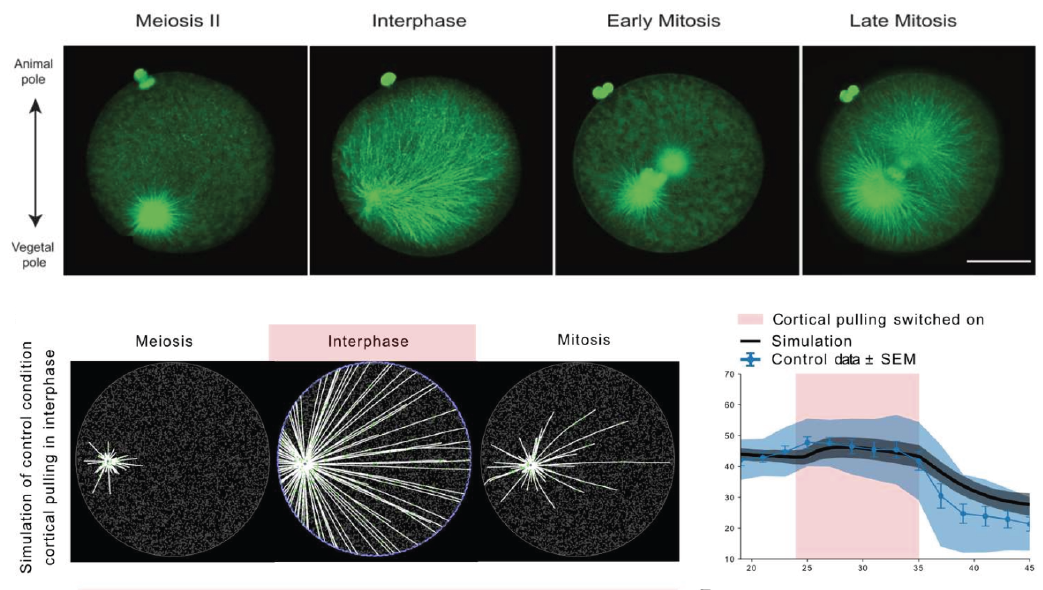Reduction of cortical pulling at mitotic entry facilitates aster centration - preprint
A. Rosfelter, G. de Labbey, J. Chenevert, R. Dumollard, S. Schaub, Z. Machaty, L. Besnardeau, C. Hebras, H. Turlier*, D. Burgess*, A. Mcdougall*, Journal of Cell Science 137(7): jcs262037.
Read more: publisher - preprint
Equal cell division relies upon astral microtubule-based centering mechanisms, yet how the interplay between mitotic entry, cortical force generation and long astral microtubules leads to symmetric cell division is not resolved. We report that a cortically located sperm aster displaying long astral microtubules that penetrate the whole zygote does not undergo centration until mitotic entry. At mitotic entry, we find that microtubule-based cortical pulling is lost. Quantitative measurements of cortical pulling and cytoplasmic pulling together with physical simulations suggested that a wavelike loss of cortical pulling at mitotic entry leads to aster centration based on cytoplasmic pulling. Cortical actin is lost from the cortex at mitotic entry coincident with a fall in cortical tension from ∼300pN/µm to ∼100pN/µm. Following the loss of cortical force generators at mitotic entry, long microtubule-based cytoplasmic pulling is sufficient to displace the aster towards the cell center. These data reveal how mitotic aster centration is coordinated with mitotic entry in chordate zygotes.
